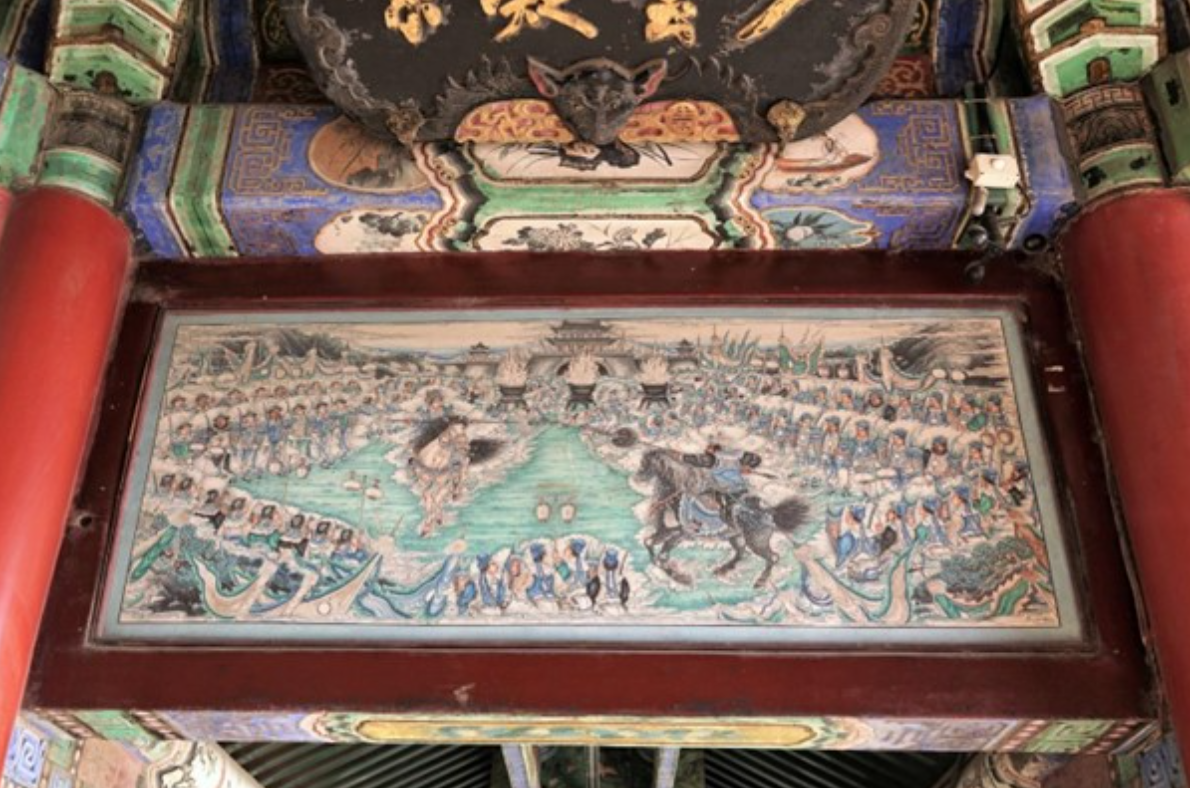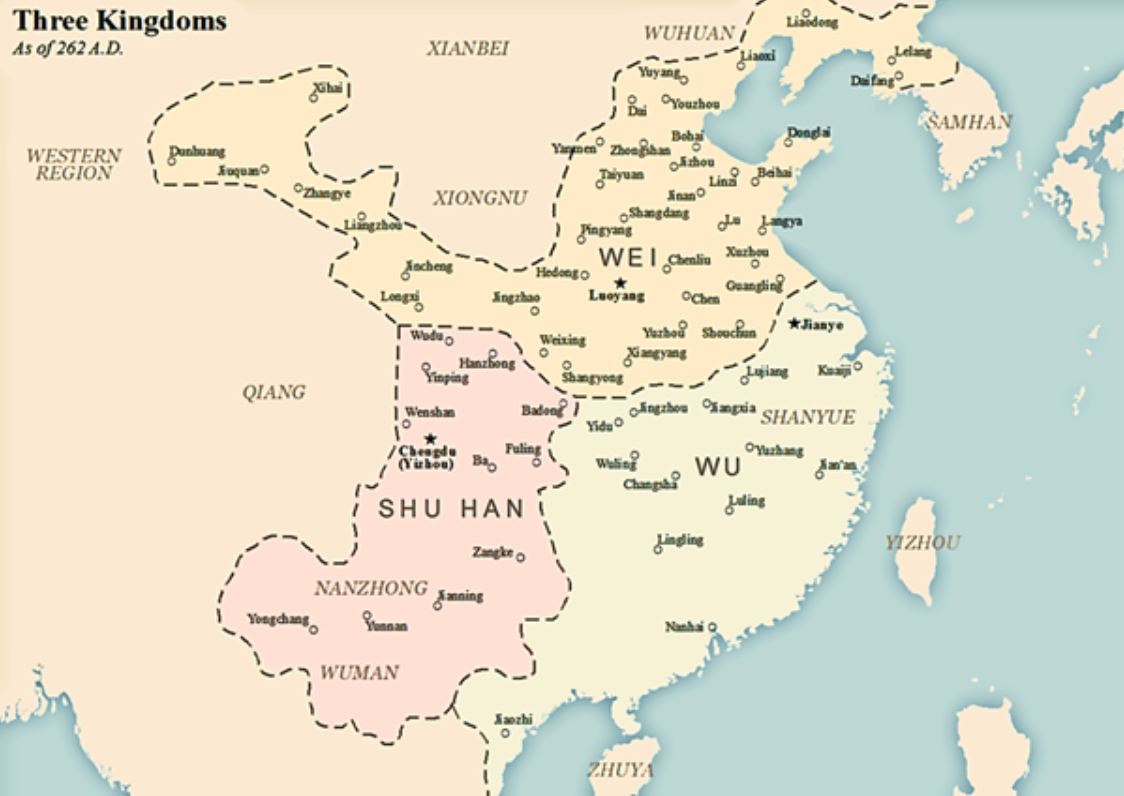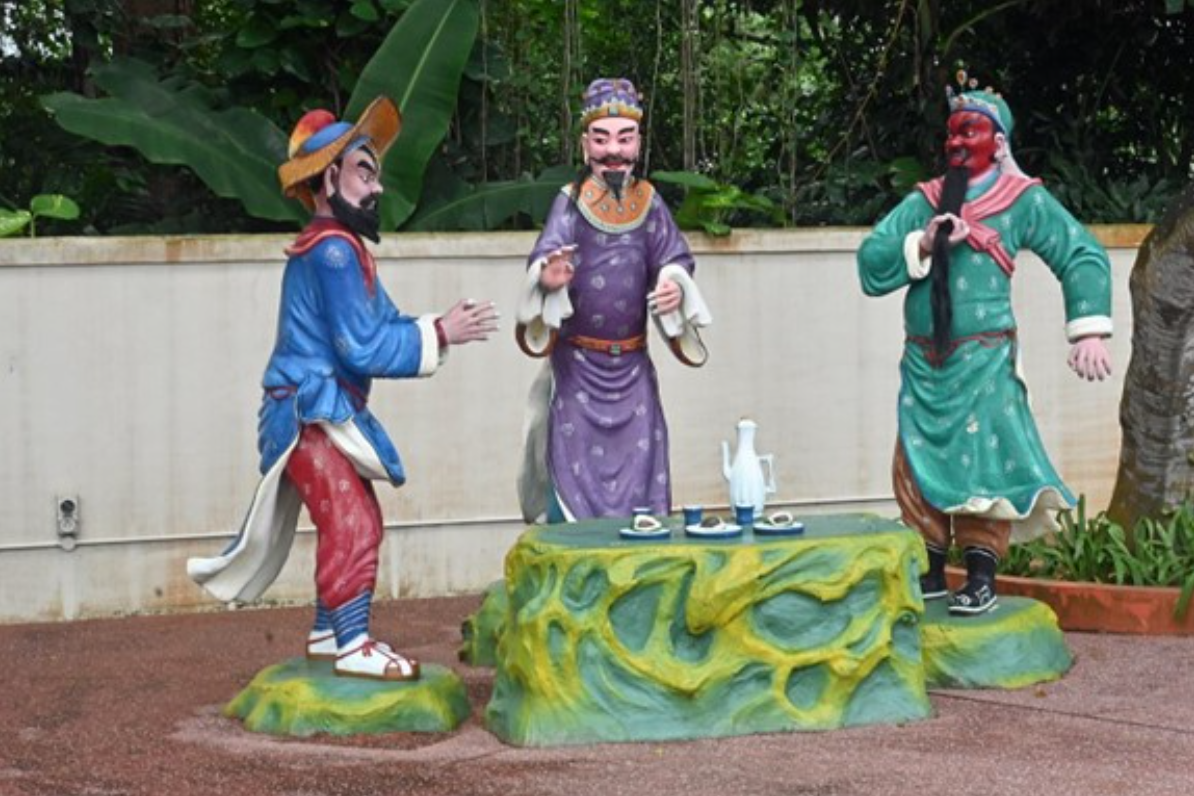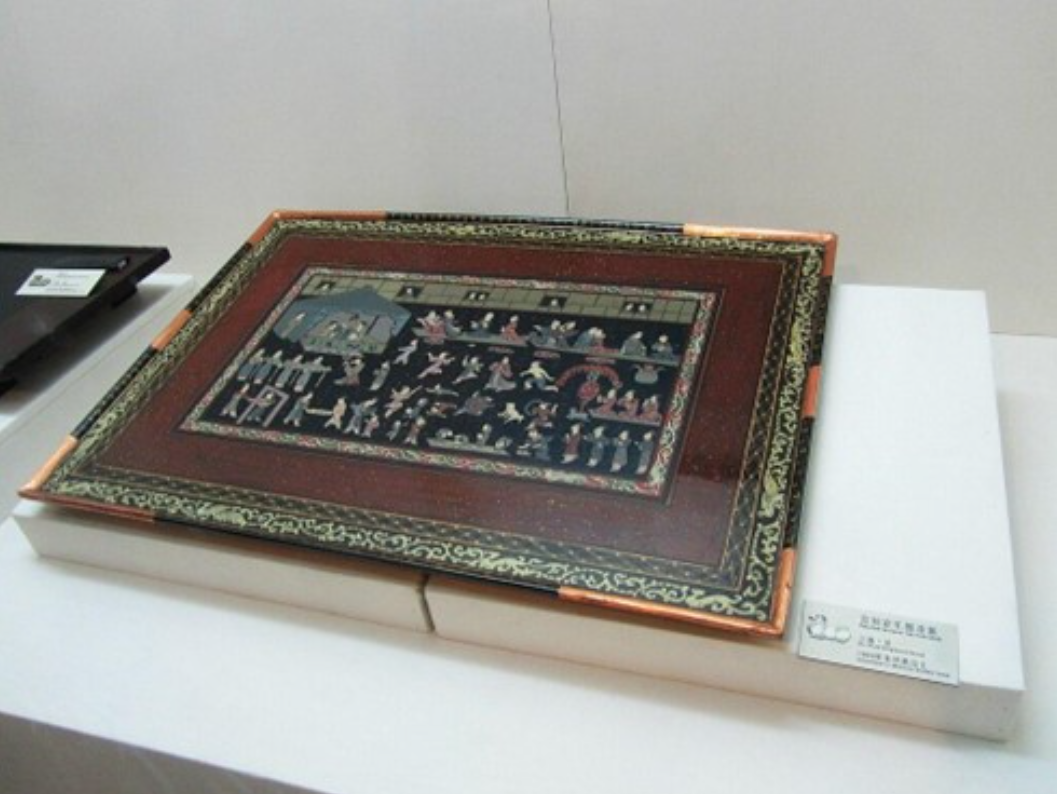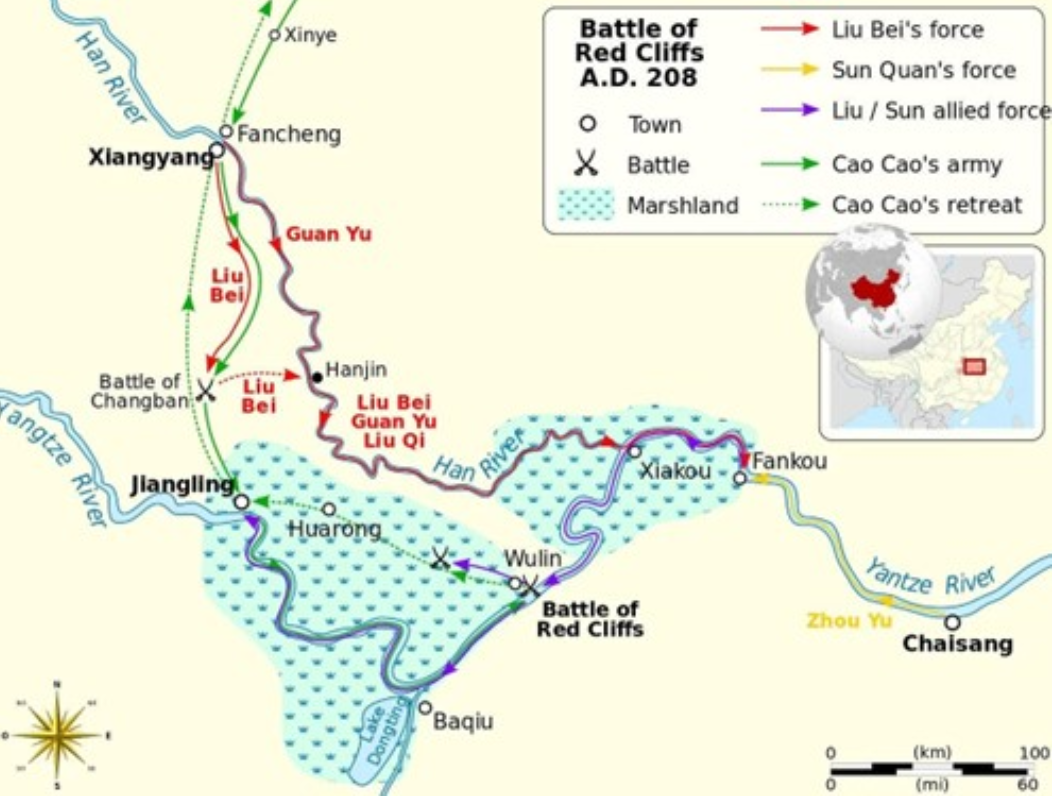Dynasty Warriors: Searching for the Heroes of Romance of the Three Kingdoms
An artistic depiction of Zhang Fei and Ma Chao during their fictional duel at the Battle of Jiameng Pass YiHeYuan Summer Palace, Beijing (image credit: Slices of Light 2018)
Romance of the Three Kingdoms is a historical novel written in the 14th century by Ming dynasty writer Luo Guanzhong, its story involving a fantastical twist on the historical events surrounding the end of the Han dynasty (202 BC – 220 AD) and the Three Kingdoms period (220 to 280 AD). Detailing the rise of Cao Wei, Shu Han, and Eastern Wu states in the North, Southwest and Southeast of China respectively. It features larger-than-life characters, many of whom are still present in the popular imagination today including Cao Cao, Zhuge Liang, Guan Yu, and Liu Bei among many others. The novel is one of Chinese literature's Four Classic Novels and has been adapted into various media including video games, anime, movies, and TV dramas. The novel is based on the 3rd-century Records of the Three Kingdoms by Chen Shou. This article will discuss the archaeological sites associated with the novel.
A map showing the Three Kingdoms (image credits: Seasonsinthesun 2017)
Cao Wei
Founded by Cao Cao and his son Cao Pi, Wei controlled northern China and is often depicted as a villainous overwhelming force to be overcome by its rival states. It was beaten by the Jin dynasty founded by its strategist Sima Yi.
Tomb of Cao Cao
Cao Cao was a fearsome warlord who founded the Cao Wei dynasty, he used cunning and wit to defeat other warlords such as Lu Bu, and Yuan Shao, uniting the north of China. He nominally paid homage to Emperor Xian of Han, though he treated him like a puppet ruler. He spent his later years trying unsuccessfully to conquer the lands below the Yangtze but was defeated by the combined forces of Liu Bei and Sun Quan at the Battle of Red Cliff.
After his death, his son Cao Pi forced Xian to abdicate and declared the Cao Wei imperial dynasty with Cao Cao as its founder. Opinions on him are divided between that of a treacherous, power-hungry tyrant, and a capable heroic leader who almost united China.
In 2008, a tomb in Anyang, Henan province. was found after local authorities seized a tablet inscribed ‘King Wu of Wei’ from local grave robbers who claimed to have stolen it from said tomb. The tomb consists of a vertical stepped shaft entrance which leads into two underground brick chambers, a common feature in Han dynasty tombs, the team excavating found 250 artefacts inside.
The authenticity of the tomb is debated with some doubting the site, while others claim it belongs to one of Cao Cao’s heirs. In stories, Cao Cao had 72 false tombs constructed to hide his burial site.
The entrance to the tomb of Cao Cao, Henan province (image credits: Rolf Mueller 2017)
Shu Han
Shu was founded by Liu Bei and was based around Sichuan; its generals are often depicted as the ‘good guys’ of narratives of the three kingdoms. It is remembered for the oath of fraternity taken by Liu Bei, Guan Yu and Zhang Fei in a ceremony in the Peach Garden. Guan Yu was later enshrined as a deity during the Sui Dynasty. It was conquered by Wei in 263, with the last Shu ruler living comfortably as a noble in Luoyang until the end of his days.
Shu Han is considered the most legitimate successor to the Han dynasty of the three kingdoms and was geographically centred in the same place as the pre-imperial Han kingdom of Liu Bang.
The Oath of the Peach Garden sworn by Liu Bei, Guan Yu and Zhang Fei commemorated in a statue at Haw Par Villa theme park (Image credits: Choo Yut Shing 2022)
Tomb of Liu Bei and Zhuge Liang Memorial
In Cheng Du, Sichuan province lies the tombs of Liu Bei and his Prime Minister Zhuge Liang. It is unknown when the tomb of Liu Bei was made, as in 221AD when he passed due to illness, Shu had suffered a series of defeats by Wei and Wu; thus, was unable to build a suitable memorial. The burial resembles a simple mound with temples and entrances added at later dates, no record of it being excavated could be found.
In ancient times Liu Bei was worshipped at this temple and it contains several statues of his vassals including his sworn brothers Guan Yu and Zhang Fe. In the narrative, Liu Bei was portrayed as benevolent but an underdog, a perfect foil to the cunning Cao Cao. The tomb likewise is compared to Cao Cao’s, being individual and unspoiled, rather than requiring 72 fakes to prevent robbery. The tomb exterior is rather more austere looking compared to Cao Cao’s, though excavation would help create a real comparison.
The Zhuge Liang temple was merged with Liu Bei’s Tomb much later during the Ming Dynasty. Liu Bei visited Zhuge Liang three times before Zhuge decided to serve him, impressed by his qualities as a man.
The Entrance to the Tomb of Liu Bei in Cheng Du, Sichuan (Image credits: Morio 2016)
Pang Tong's Tomb
Pang Tong, one of Liu Bei’s trusted advisors was killed in an ambush while riding Liu Bei's horse and was mistaken for him. The tomb and attached shrine were built in 214 AD to honour this sacrifice. It is known as the "Dragon and Phoenix Shrine" because there are statues of Pang Tong and Zhuge Liang inside. Pang Tong and Zhuge Liang were nicknamed "Young Phoenix" and "Sleeping Dragon" respectively. There are two large trees reported to have been planted by Zhang Fei himself.
Eastern Wu
Wu, founded by the Sun Quan of the Sun family, descended from Sun Tzu. It is seen as a civiliser of the southeastern ‘jungle’ territories, turning them into a commercial hub, extending its influence into contemporary Vietnam, and colonising Taiwan for the first time in the history of China. It was conquered by Jin in 280 AD.
Tomb of Zhu Ran
Zhu Ran was a fearsome general who defended Jiangling City from a massive Wei invasion force with only 5,000 men, gaining infamy from this.
The tomb of Zhu Ran was discovered in 1984 during the construction of a factory in Ma'anshan, Anhui. It had been underground for nearly 1,700 years and contained 140 historically significant items. Many of the items were clogs, tables and plates made of lacquered wood, some of the oldest lacquer found in the world.
The tomb of Zhu Ran (image credits: 猫猫的日记本 2012)
A lacquer wooden table from Zhu Ran's tomb depicting figures in Hanfu (Image credits: 猫猫的日记本 2012)
Red Cliffs Battle Site
The Battle of Red Cliffs, also known as the Battle of Chibi, took place in 208 AD and resulted in a Wu/Shu alliance victory over Wei, halting Cao Cao’s southern invasion. It is depicted in the epic movie Red Cliff (2008). The fictionalised account of the battle paints Wu strategists Lu Su and Zhou Yu in a bad light, as cruel and cynical and inferior to Zhuge Liang. The Wu-Shu alliance had Huang Gai fake surrender and then use fireships to burn the Wei ships, which had been chained together to prevent seasickness, before routing the confused enemy. Scholars debate the location of the battle as either Wuhan, Chibi City or Xianning in Hubei province.
An overview of the Battle of Red Cliff (image credits: Semhur 2009)
Further Reading
On the Three kingdoms
Guanzhong Luo, and Martin Palmer. 2018. The Romance of the Three Kingdoms (London: Penguin Books)
Walter De Gruyter. 2011. ‘The Three Kingdoms Tomb at Caiyue, Fancheng District in Xiangyang, Hubei’, Chinese Archaeology, 11.1 https://doi.org/10.1515/char.2011.11.1.92
On Chinese Archaeology
Chen Li. 2018. Han Dynasty (206BC–AD220) Stone Carved Tombs in Central and Eastern China (Archaeopress Publishing Ltd)
Gideon Shelach-Lavi. 2015. The Archaeology of Early China (Cambridge University Press)
Michael Loewe. 2005. Everyday Life in Early Imperial China during the Han Period, 202 BC-AD 220 (Hackett Publishing)
About the Author
Leon Corneille-Cowell is a BSc archaeology student at the University of York graduating in the Summer, he will be starting a master's in funerary archaeology in September. Asian archaeology and history have always been a fascination of his.


